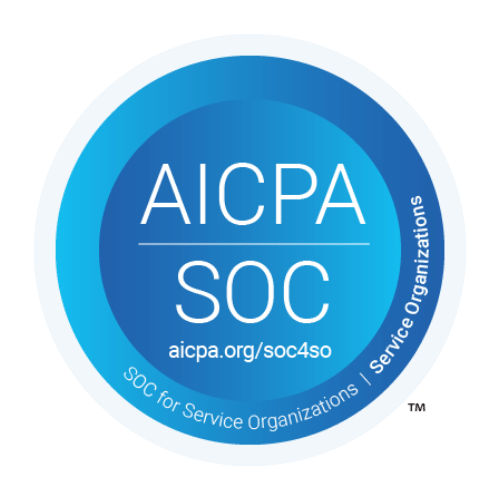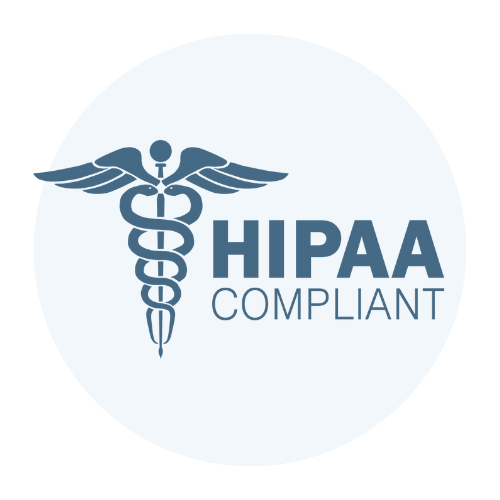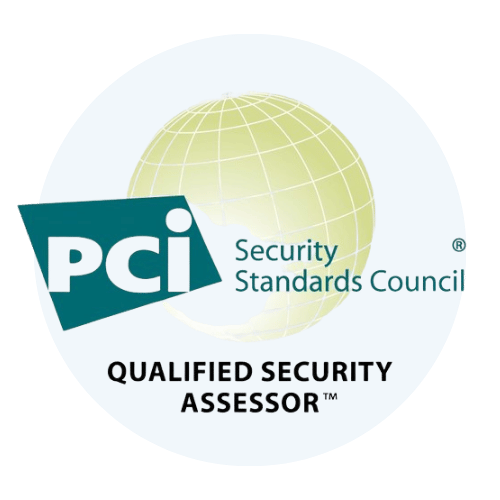The NIST Cyber Risk Scoring Advantage: How to Fortify Your Cyber Risk Management
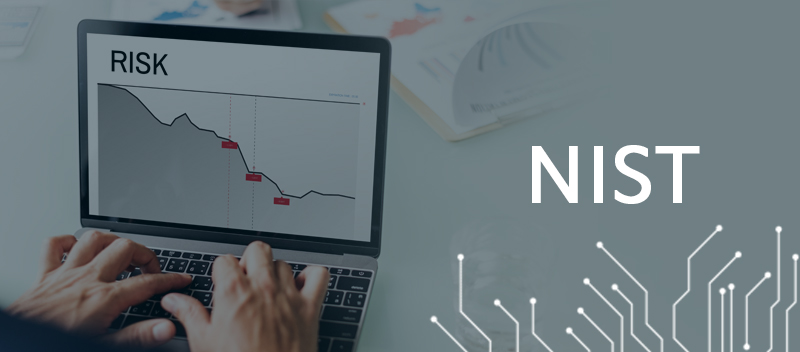
61% of Americans report having experienced a cyber security event, such as a data breach. For 44% of those people, it has happened more than once. As a result, many people are concerned about the safety of the data they share with organizations and businesses with whom they do business. That’s where NIST scoring comes into play. But what exactly is NIST scoring, and why is this important for you? NIST scoring gives you an accurate view of your security framework’s state and areas needing development. It allows you to prioritize actions, allocate resources efficiently, and, ultimately, strengthen your defenses against cyber threats. Understanding the NIST CSF Understanding the intricacies of the National Institute of Standards and Technology (NIST) Cybersecurity Framework (CSF) can be a game-changer. What is the NIST Cybersecurity Framework? Created by the National Institute of Standards and Technology and published in 2014, the CSF provides a structured approach to identifying and managing cybersecurity risks. It comprises a set of controls that allow you to evaluate your security strengths and pinpoint areas for improvement. But what makes it truly valuable is its flexibility — tailored to fit organizations of all sizes and sectors. Earlier this year, the NIST CSF broadened its scope to assist all organizations, beyond its initial focus on critical infrastructure, in managing cybersecurity risks. The recent updates enhance core guidance and introduce resources emphasizing governance and supply chain security. These improvements result from a comprehensive multiyear process involving extensive discussions and public feedback. Components of the CSF The framework is built around five core functions: Identify Protect Detect Respond Recover Govern We’ll discuss the components in more detail in the following sections. Purpose of the NIST Cyber Risk Scoring System The scoring system within the NIST framework helps you quantify your risk posture. It’s like a diagnostic tool that reveals where you stand and highlights areas that need attention. By doing so, you can make informed decisions about where to allocate resources and how to enhance your security measures. Learn more about the NIST CSF 2.0 Here Deep Dive: Key Components of NIST CSF Each component of the NIST CSF plays a distinct role in the NIST cyber risk scoring assessment process. Let’s explore these elements below: — Identify Develop an understanding of how to manage cybersecurity risks to systems, people, assets, data, and capabilities in your company’s context. Comprehending the business landscape, vital resources, and related cybersecurity risks enables an entity to focus and organize its endeavors in accordance with its risk mitigation strategy and sector requirements. — Protect Create security protocols and safeguards that protect your systems from the most threats while minimizing the negative consequences of the rest. In order to protect your systems from most risks and lessen their impacts, you can use tools, personnel training, security systems for data, and systems that automatically monitor to make use of these tools and regulate entrée. — Detect The first step in detecting a cyber-attack is determining what activities should be done if one occurs. The detection function aids in the detection of cybersecurity events. — Respond The Respond Function is one of the functions that may be used during a cybersecurity incident. It helps with containing the consequences of a possible cybersecurity event. — Recover The Recover Function determines which activities should be carried out to preserve resilience and restore any capabilities or services that have been lost as a result of a cybersecurity event. Minimizing the damage caused by a cybersecurity incident makes timely recovery to normal operations possible. — Govern Governance underscores the role of leadership in your cybersecurity efforts. The introduction of this new function places emphasis on leadership-level involvement and oversight of cybersecurity efforts, highlighting the framework’s flexibility and adaptability to various industry sectors and organizational needs. By weaving these components into your cybersecurity strategy, you not only assess and enhance your current measures but also strengthen them to meet future demands. Benefits of Using NIST Cyber Risk Scoring NIST scoring provides multiple benefits for your business: Improved Risk Visibility and Understanding When you implement NIST scoring, you gain a deeper insight into your cybersecurity landscape: Comprehensive Risk Assessment: NIST scoring gives you a comprehensive picture of possible dangers by enabling you to methodically identify and evaluate risks. You may identify any weaknesses that could affect your operations with the aid of this clarity. Informed Prioritization: With a detailed understanding of where your weaknesses lie, you can prioritize your security measures effectively, ensuring that critical areas receive immediate attention. Enhanced Decision-Making Capabilities NIST scoring equips you with the tools needed for strategic decision-making: Structured Framework: This approach offers a well-defined process that guides you in evaluating which cybersecurity areas require the most focus, helping you avoid guesswork. Efficient Resource Allocation: You may strategically deploy your resources, making sure that time and money are spent where they will have the biggest influence on your security posture, by explicitly identifying high-risk locations. Strengthened Cybersecurity Posture Incorporating NIST scoring into your strategy means fortifying your defenses: Robust Security Protocols: The framework encourages the implementation of strong security measures, reducing the likelihood of successful attacks and mitigating potential damages. Adaptability to Threats: As cyber threats evolve, NIST scoring helps you continuously refine and adapt your security strategies, keeping your organization one step ahead of potential breaches. Demonstrated Commitment to Security Adopting NIST scoring sends a powerful message about your dedication to security: Building Stakeholder Trust: Employing this respected framework demonstrates to clients, partners, and regulators that you take cybersecurity seriously, fostering trust and confidence. Enhanced Reputation: By demonstrating your dedication to protecting sensitive data, you build your organization’s credibility and reputation and establish it as a pioneer in security best practices. This proactive approach ensures you’re prepared to tackle both current and future cybersecurity challenges with confidence. Talk to our experts today! How to Conduct a NIST Cyber Risk Scoring Assessment Let’s walk through the steps of conducting an NIST scoring assessment to make the implementation as smooth as possible.
Revolutionize Your Security: Unveiling the Power of Next-Gen Cybersecurity Monitoring
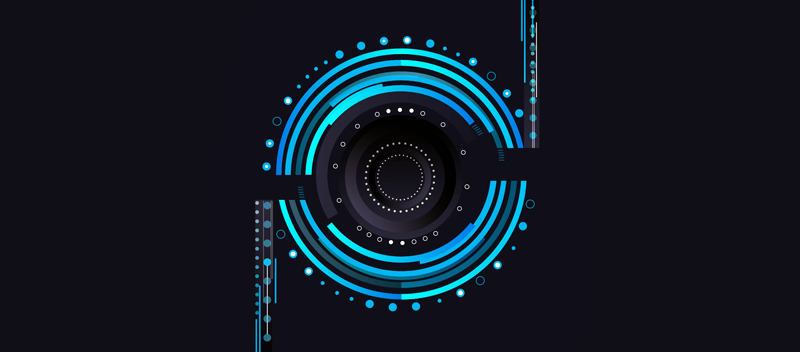
The environment of cybersecurity has drastically changed in the past year. As geopolitical and economic changes make the world more difficult and uncertain for businesses as well as consumers, there is an increasing need for proactive security measures. Malicious actors are always adapting to new technological advancements, and new players and dangers have emerged globally. This is in addition to creative ways of utilizing or abusing pre-existing tactics and techniques. Enter next-gen cybersecurity monitoring — an innovative approach that vastly outperforms traditional methods. This article delves into the limitations of conventional monitoring techniques, such as delayed detection and limited threat visibility, and explores how next-gen solutions, including AI-powered analytics and continuous threat intelligence, provide enhanced threat detection and streamlined incident response. The Limitations of Traditional Monitoring Traditional monitoring methods, like log analysis, might once have been the backbone of cybersecurity, but now they’re beginning to show their age. You might have noticed it yourself, those nagging delays in spotting threats or the ominous blind spots that leave you guessing about potential vulnerabilities. Let’s break down why these methods are struggling to keep up. – Delayed Detection First, there’s the issue of delayed detection. Traditional monitoring often relies on periodic log reviews, meaning real-time threat detection simply isn’t in the cards. By the time a threat is identified, the damage might already be done. It’s like trying to catch a thief by reviewing last week’s security footage, valuable, but often too late. – Incomplete Coverage Then, we have incomplete coverage. The sheer volume of data generated by modern networks is staggering. Traditional methods can only handle so much, leaving significant gaps where threats can sneak through unnoticed. It’s akin to having holes in your fishing net; you catch some but miss others. – Limited Threat Visibility Finally, consider the challenge of limited threat visibility. Traditional monitoring focuses on known threats, but as you know, cyber threats are evolving faster than ever. With only a narrow view, these methods often miss the subtle signs of emerging dangers. Summary of Pain Points 1. Delayed Detection Slow identification of threats Reactive rather than proactive approach 2. Incomplete Coverage Limited data handling capacity Potential vulnerabilities overlooked 3. Limited Threat Visibility Focuses on known threats only Struggles with identifying new, subtle threats By understanding where these traditional approaches falter, you can better appreciate the need for a more robust, next-gen monitoring solution that addresses these limitations head-on. Learn more about our Next-Gen Managed Security services Here The Power of Next-Gen Monitoring Solutions At their core, these next-gen monitoring solutions are designed to provide comprehensive visibility and real-time analytics, ensuring you’re never caught off guard. 1. Advanced Techniques Next-gen monitoring leverages several cutting-edge techniques to keep you a step ahead: AI-Powered Analytics: AI-powered analytics processes vast amounts of data quickly, identifying patterns that might indicate a threat. This allows you to detect and respond to threats as they occur, not hours or days later. User Behavior Monitoring: By understanding normal user behavior, these solutions can detect anomalies that suggest malicious activity. It’s like having a radar that alerts you the moment something unusual is detected. Continuous Threat Intelligence: Threats evolve, but so does our intelligence. Continuous threat intelligence ensures you’re always informed about the latest vulnerabilities and attack vectors, allowing you to adapt your defenses in real-time. 2. Benefits of Next-Gen Solutions The advantages of adopting next-gen monitoring are substantial and transformative: Enhanced Threat Detection: With real-time capabilities, you can identify and neutralize sophisticated threats as they emerge, minimizing potential damage. Improved Incident Response: Time is of the essence when responding to attacks. These solutions streamline your response efforts, helping you act swiftly and decisively. Comprehensive Monitoring: Whether it’s your network, endpoints, cloud environments, or user activity, next-gen solutions provide a holistic view, leaving no stone unturned. Actionable Insights: Armed with valuable data, you can prioritize vulnerabilities effectively, bolstering your security posture and making informed decisions. By embracing the power of next-gen monitoring solutions, you gain more than just a security upgrade; you gain peace of mind. TrustNet – Your Next-Gen Monitoring Partner In safeguarding your digital assets, it is important to work with a partner who can appreciate the dynamics of cybersecurity and customize the service to your needs. This is where TrustNet comes in. Owing to many years of experience in the cyber security domain, we have made it our mission to offer you the best solutions that put you one step ahead. Our Next-Gen Monitoring Services At TrustNet, we offer a comprehensive suite of next-gen monitoring services designed to cover every facet of your security needs: Network Security Monitoring: We ensure your network is fortified against intrusions with real-time monitoring and advanced analytics. Endpoint Security Monitoring: Protecting your endpoints is critical. We provide robust monitoring solutions to guard against unauthorized access and malware. Cloud Security Monitoring: As your operations move to the cloud, TrustNet ensures your cloud environments are secure, compliant, and resilient against attacks. User Behavior Monitoring & Analytics (UBA): By analyzing user behavior, we detect anomalies that might indicate potential security breaches, enabling proactive measures. Threat Intelligence Integration: Stay informed with the latest threat intelligence, seamlessly integrated into your security strategy for a proactive defense. Customization and Client Focus At TrustNet, we believe in a customized approach to cybersecurity, as every organization faces unique issues and has its own requirements. We provide more than just technology; it is about empowering your organization’s entire defense strategy. With TrustNet by your side, you’re not just keeping up with the digital age — you’re leading the charge with confidence and peace of mind. Embrace the Future with Next-Gen Cybersecurity Monitoring Today, staying one step ahead is non-negotiable. Next-gen cybersecurity monitoring offers a transformative approach, enabling enhanced detection that catches even the most sophisticated threats in real-time. With improved incident response, you can act swiftly and decisively, minimizing potential damage. Furthermore, comprehensive monitoring ensures no part of your digital ecosystem is left unchecked, from networks and endpoints to cloud environments and user activities. And with
Mitigating GDPR Risks | FAQs
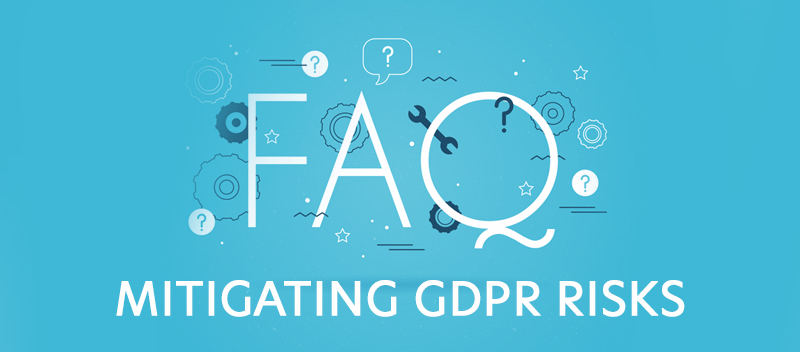
1. What is GDPR, and why is it significant for organizations processing EU personal data? The General Data Protection Regulation (GDPR) protects the personal data of EU citizens. If your organization is handling this kind of data, GDPR sets strict rules on how you gather, use, and store it. By following the regulations, you not only save yourself from paying heavy fines but also demonstrate to your clients how much you value their privacy. It’s a win for trust and reputation in today’s data-driven world. 2. Why is conducting a thorough GDPR risk assessment important for organizations? Conducting a GDPR risk assessment helps you uncover where your data handling could be at risk. By pinpointing these areas, you can shore up defenses, ensuring you meet GDPR standards. This proactive step isn’t just about dodging penalties; it’s about building a fortress of trust with your clients. 3. What are the key GDPR risks that organizations need to be aware of? Key GDPR risks include data breaches, unauthorized access to personal data, and insufficient data protection measures. Organizations must also be aware of the risk of non-compliance due to inadequate documentation, lack of data processing transparency, and improper data handling practices. Additionally, the involvement of third-party vendors can introduce risks if they do not adhere to GDPR standards. 4. What are the potential consequences of non-compliance with GDPR regulations? Failure to adhere to GDPR regulations may incur significant fines, set at a maximum of 20 million euros or 4% of total global revenue within the year, whichever sum is higher. Furthermore, in addition to the monetary costs incurred by the organization, it may encounter reputational damage in the eyes of the public, which will lead to a loss of customer trust and even business opportunities. 5. What are the steps involved in conducting a comprehensive GDPR risk assessment? Tackling a GDPR risk assessment might seem daunting, but breaking it down into steps makes it manageable: Data Mapping and Inventory: Identify all the personal data you handle. Risk Identification: Look for potential vulnerabilities, including those from third parties. Risk Analysis and Prioritization: Gauge the impact of these risks and prioritize them. Implement Mitigation Measures: Strengthen security and refine your data processes. Monitoring and Review: Keep an eye on your measures, updating them as needed. 6. How can organizations identify and prioritize GDPR-related risks effectively? Start with a thorough audit of the personal data your organization handles. Understand its origin, processing methods, and destinations. Once you’ve mapped out your data flow, apply a risk assessment matrix to evaluate potential threats based on likelihood and impact. Focus primarily on areas with the highest risks. Prioritizing these risks helps you allocate resources effectively, ensuring a proactive rather than a reactive approach. 7. Why is data mapping and inventory crucial in GDPR compliance? Think of data mapping and inventory as the foundation of GDPR compliance. They allow you to: Trace Every Data Point: Know exactly what data you hold, where it’s stored, and its usage throughout its lifecycle. Build Client Trust: Transparency in your data handling processes enhances trust with clients. With a comprehensive view of your data landscape, you’re better equipped to defend against breaches and misuse. 8. What should organizations consider regarding their data processing activities? First, ensure a lawful basis for processing personal data. Communicate transparently with individuals about why and how their data is being used. It is essential to carry out regular updates and reviews on your activities in processing personal data. Keeping detailed records of these activities also builds accountability. 9. How can organizations ensure their data security measures meet GDPR standards? Achieving GDPR standards in data security involves a multifaceted approach: Implement technical measures like encryption and pseudonymization. Keep your software and security protocols updated to counter new threats. Train your employees thoroughly so they understand data protection policies and recognize potential breaches. 10. What role do third-party relationships play in GDPR compliance? Third-party relationships can introduce additional risks to your GDPR compliance. It’s essential to: Conduct thorough due diligence to ensure all third parties are GDPR-compliant. Draft clear contracts that outline responsibilities and expectations. Regularly review these agreements to maintain compliance. 11. How important is employee training and awareness in managing GDPR risks? Employee training and awareness are crucial components in managing GDPR risks. Regular training sessions help to guarantee that everyone is aware of the GDPR’s significance and their part in ensuring compliance. This entails spotting possible data breaches, comprehending data security guidelines, and implementing best practices in regular business operations. When your employees are informed and vigilant, the likelihood of unintentional data mishandling diminishes significantly. 12. What are some effective strategies for mitigating GDPR risks? Mitigating GDPR risks involves a well-structured approach: Conduct Regular Audits: Regularly audit your data processing activities to identify and address vulnerabilities. Implement Strong Access Controls: Limit data access to only those who need it to perform their duties. Data Encryption: Use encryption techniques to protect sensitive information both in transit and at rest. Develop a Response Plan: Have a clear incident response plan to manage data breaches swiftly and effectively. 13. Can you provide examples of best practices and solutions for GDPR compliance? Here’s how you can tackle GDPR compliance effectively: Maintain a Data Inventory: Keep a comprehensive record of the data you process. This helps in understanding what data you hold and how it’s used. Conduct Privacy Impact Assessments: Evaluate new projects to identify potential privacy risks and address them proactively. Stay Informed: Regularly update your processes with the latest regulatory changes to ensure ongoing compliance. Data Anonymization and Pseudonymization: Use these techniques to enhance privacy protection, minimizing the risk of data breaches. Appoint a Data Protection Officer (DPO): Having a dedicated DPO provides expert oversight and guidance in managing GDPR compliance. 14. What tools and resources are available to assist with GDPR risk assessments? To effectively conduct GDPR risk assessments, consider using these tools and resources: Data Mapping Software: Visualize and track your data flows to understand how information
Elevating Managed Security Services at MSSPAlertLive 2025
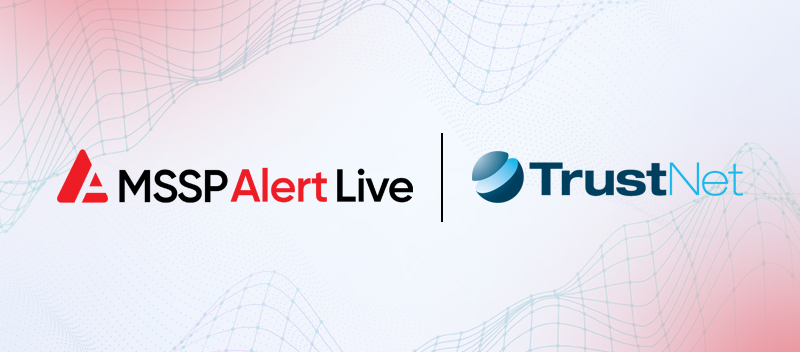
MSSPAlertLive 2025, held on October 14th – 16th at the Hyatt Regency, Austin, TX, was a premier event that converged the managed security providers, innovators, and strategists. The event’s theme, “Level Up – Elevate Your Security Business,” provided a platform for various engaging workshop sessions/product demos and informative keynote sessions with value-added resources. It was a great pleasure for TrustNet to be part of this event; it reminded us of our dedication to excellence within the Managed Security space. TrustNet has been providing managed security services at the highest level for years, and this unique opportunity allowed us to discuss the industry’s future with peers and other industry experts. Understanding the Costs of FedRAMP Certification MSSPAlertLive 2025 was a standout example of innovation and set the stage for impactful conversations around Managed Detection & Response (MDR), threat intelligence, and automation in security operations. A view that was driven home by keynote sessions — and a sentiment nicely aligned with TrustNet’s mission of adaptive, future-focused strategies. Our team attended a series of expert panels where we met with industry veterans and experts in the field as they sat down to talk about threat management best practices and building more resilient security frameworks. The event also featured tech trends impacting the Managed Security landscape. Conversations around using AI and machine learning in MSSP operations indicated that these technologies increased efficiency and accuracy. It also stressed why threat hunting has become a crucial tactic in staying ahead of cyber threats. While engaging in those conversations, TrustNet further demonstrated our commitment to new ideas and concepts and reinforced our leadership role in delivering cutting-edge security solutions. TrustNet’s Commitment Joining MSSPAlertLive 2025 reinforced TrustNet’s dedication to staying ahead of industry challenges and trends. We continuously enhance our services to equip our clients with the latest security solutions. Our comprehensive managed security approach combines preemptive threat responses, professional insights, and real-time monitoring to give our clients the confidence and security they require to run their businesses. The Accelerator+ strategy is essential to our commitment to excellence. Accelerator+ combines Advisory, Audit/Assessment, and Automation services to provide a comprehensive Triple-A approach to compliance. These components work together to safeguard your compliance journey in the following ways: — Advisory Our Advisory service examines your current operational standards against industry benchmarks, identifying strengths and areas for improvement. This meticulous evaluation addresses security vulnerabilities, steering your organization toward compliance excellence. — Audit/Assessment Our experienced auditors and assessors provide meticulous planning, streamlined data collection, and insightful assessments, ensuring your compliance processes are robust and value-driven. — Automation Through our sophisticated automation platform, we streamline governance, risk, and compliance management processes. This tool aids in meeting SOC, PCI DSS, ISO 27001, and other governance requirements, ensuring efficient and effective audits. Empowering Transformation in Managed Security TrustNet is grateful to MSSPAlertLive for the experience. We look forward to leveraging the insights from the event, which will empower our mission to transform the managed security services space. Discover how TrustNet’s managed security solutions can empower your business. Schedule a consultation with our experts today.
Costs of FedRAMP Certification
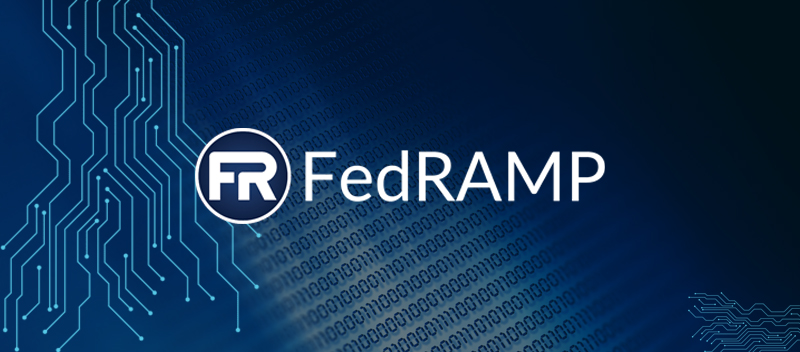
Did you know that 85% of respondents in the FedRAMP Annual Survey concurred that the program significantly promotes the adoption of secure cloud services throughout the U.S. Government? As a cornerstone of federal IT security, the Federal Risk and Authorization Management Program (FedRAMP) ensures that cloud service providers meet rigorous security and compliance standards for handling federal data. Obtaining FedRAMP accreditation enhances a provider’s reputation as a leader in security procedures while also making it easier for them to get lucrative federal contracts. For prospective federal contractors, this article provides insightful information as it explores the financial and strategic benefits of obtaining a FedRAMP certification. Understanding the Costs of FedRAMP Certification Understanding the costs associated with a FedRAMP certification is crucial for cloud service providers. To paint a clearer picture, let’s break down these expenses into direct and indirect categories. — Direct Costs These are the upfront expenses directly associated with achieving and maintaining FedRAMP certification. Assessment Fees: Engaging third-party assessment organizations (3PAOs) to evaluate your cloud services is essential. These fees cover the comprehensive security assessments needed to meet FedRAMP standards. Remediation Costs: If the initial assessment identifies areas that need improvement, you’ll incur costs to address these security gaps. This could involve upgrading systems or implementing new protocols. Certification Fees: Once your systems are up to par, there are fees associated with the official certification process itself, ensuring your services meet all necessary criteria. Ongoing Maintenance Costs: Maintaining certification isn’t a one-time effort. Continuous monitoring and periodic reassessments are required, each adding to the ongoing financial commitment. — Indirect Costs Beyond the direct expenses, there are several indirect costs that organizations should consider. Opportunity Costs: The time and resources dedicated to obtaining certification might divert attention from other business opportunities. It’s essential to weigh these against potential gains from government contracts. Resource Allocation: Significant internal resources, including staff time and expertise, are required to manage the certification process. This reallocation can affect other areas of your business operations. Internal Disruptions: Implementing new security protocols and compliance measures can temporarily disrupt your usual business workflow. Planning for these changes is crucial to minimize impact. Understanding these costs in detail allows organizations to better prepare for the financial and operational commitments involved, ensuring a smoother journey toward FedRAMP certification. Learn more about our FedRAMP compliance services Here Factors Affecting FedRAMP Certification Costs Embarking on the journey to FedRAMP certification involves navigating various cost factors that can significantly influence the overall investment required. Below, we explore the key elements affecting the cost of FedRAMP certification. 1. Organization Size and Complexity Scale of Operations: Larger organizations often face higher certification costs due to the extensive nature of their operations. More systems and processes mean a broader scope for security assessments. Complex Infrastructure: Companies with intricate IT environments may encounter increased costs as they require more detailed assessments to ensure every component meets FedRAMP standards. 2. Existing Security Controls and Maturity Current Security Posture: Organizations with mature security frameworks may experience lower costs as they likely have fewer compliance gaps to address. Need for Upgrades: Conversely, businesses with underdeveloped security controls might incur additional expenses to implement necessary upgrades and improvements. 3. Scope of the Certification The Extent of Coverage: The scope of services and systems covered by the certification affects costs. A broader scope typically requires more comprehensive assessments and, therefore, higher fees. Specific Requirements: Tailoring the certification to meet specific government agency requirements can also impact costs, necessitating bespoke assessments or additional documentation. 4. Choice of Authorized Third-Party Assessment Organization (ATPAO) Selection of ATPAO: Different ATPAOs may offer varying cost structures based on their expertise, reputation, and the depth of their assessments. Service Packages: Some ATPAOs might provide bundled services that include initial assessments, remediation guidance, and ongoing support, which can influence the overall cost. By acknowledging these variables, businesses can strategically plan their path to FedRAMP certification, ensuring compliance and cost-effectiveness. Cost-Saving Strategies Here are several effective cost-saving strategies to consider in your FedRAMP certification process. – Prioritizing Security Best Practices Implement Robust Standards: Adopting security best practices early can minimize the need for costly changes during the certification process. This proactive approach helps address potential compliance gaps before assessments begin. Continuous Improvement: Regularly updating your security measures to align with industry standards ensures ongoing compliance and reduces the risk of expensive upgrades later. – Leveraging Existing Security Controls Maximize Current Investments: To meet FedRAMP requirements, utilize the security measures already in place. This approach leverages your existing resources, minimizing the need for new investments. Conduct a Gap Analysis: Evaluate current systems to determine where existing controls align with FedRAMP standards, focusing efforts on efficiently bridging any gaps. – Choosing a Cost-Effective ATPAO Evaluate Options: Selecting the right ATPAO can significantly impact costs. Compare ATPAOs to find a balance between cost and expertise. TrustNet Expertise: TrustNet offers a comprehensive approach to FedRAMP certification. Their team assists from gap assessments to full FedRAMP program development, including readiness assessments and 3PAO Security Assessments. TrustNet’s services ensure your organization meets rigorous standards efficiently, providing continuous monitoring and support. – Seeking Government Funding or Incentives Explore Financial Support: Investigate government funding opportunities and incentives designed to aid organizations pursuing FedRAMP certification. These can offset some of the financial burdens associated with the certification process. Implementing these strategies not only aids in financial planning but also positions your business for successful compliance and the expansion opportunities it presents. Navigating Healthcare Compliance with Confidence By recognizing the key factors that influence the costs surrounding FedRAMP certification — such as organization size, existing security controls, and the choice of an ATPAO — businesses can strategically plan their certification journey. TrustNet offers comprehensive support from initial assessments to ongoing compliance monitoring. Our expertise can streamline your path to FedRAMP certification, ensuring efficiency and cost-effectiveness. Schedule a consultation with our FedRAMP compliance experts today, our team will provide personalized solutions to address your specific needs.
From Risk to Resilience: Why SOC 2 Compliance Matters to Your Business

Considering the current climate where most activities are carried out online, it is of the utmost importance for any organization seeking to gain and extend its clients’ trust and respect to ensure that it has proper ways of securing sensitive information. SOC 2 compliance is growing as a significant framework, outlining appropriate measures for information security and suggesting a logical process for assessing and placing security resources. SOC 2, centered on the Trust Service Criteria, assists an organization in implementing the right data protection procedures. SOC 2 reports demonstrate a commitment to strong security measures and are frequently required to interact with potential clients and partners. Who Needs SOC 2 Compliance? Understanding the importance of SOC 2 compliance is essential for any business that values data security and building trust. Who stands to gain the most from SOC 2 compliance? Let’s break it down. Companies Processing or Storing Customer Data Why It Matters: When your business is involved in processing or storing customer information, securing that data is more than just a good practice, it’s an expectation clients have. Build Trust: SOC 2 compliance shows clients that you are serious about protecting their data, which is fundamental in fostering strong, trust-based relationships. Customers are demanding more transparency and data security than ever before, which makes the trust factor more crucial. Competitive Edge: In a market where data breaches can have catastrophic effects on reputation and finances, maintaining SOC 2 compliance sets you apart. Customers favor companies that can show a commitment to safety, which gives you an edge over competitors who may not follow these standards. Organizations Handling Sensitive Information Why It Matters: If your company manages financial, medical, or personal data, adhering to strict security protocols is not optional, it’s essential. Structured Protection: SOC 2 compliance provides a robust framework to protect sensitive data, ensuring that your security measures are proactive and comprehensive. Stakeholder Confidence: By following SOC 2 standards, you demonstrate to stakeholders that your organization is capable of responsibly managing their sensitive information. Businesses Seeking Trust and Credibility Why It Matters: In a competitive business environment, establishing a reputation for reliability and integrity is vital. Reputation Enhancement: Achieving SOC 2 compliance not only signals your dedication to high-security standards but also acts as a respected credential in the business community. Partnership Attraction: SOC 2 compliance positions your company as a trusted partner, making you more appealing to potential clients and collaborators. When entering into new business partnerships, particularly with big companies, this credential is often a pre-condition. By aligning your operations with SOC 2 standards, your business not only fortifies its security infrastructure but also gains a significant strategic advantage. For more on our SOC 2 compliance services, Click Here Why is SOC 2 Important? By understanding its importance, your company can leverage SOC 2 compliance to strengthen its market position and foster long-lasting client relationships. Here’s a comprehensive look at why SOC 2 compliance is essential: — Demonstrating Commitment to Data Security and Privacy With the escalating incidences of cyber threats, safeguarding client data is non-negotiable. Comprehensive Security Measures: SOC 2 compliance ensures your security protocols are not only robust but also continuously evolving to counter new threats. Client Assurance: It sends a strong message to clients and partners that their data privacy is handled with utmost diligence and care. — Enhancing Customer Trust and Confidence Trust is integral to business success, particularly in the digital realm. Visible Commitment: SOC 2 provides clear, objective evidence of your commitment to data integrity and security, alleviating customer concerns Loyalty Development: This certification helps cement trust, encouraging customer loyalty and repeat business as clients feel secure in their transactions with you. — Improving Business Reputation and Credibility In a crowded market, a strong reputation is a valuable differentiator. Market Differentiation: SOC 2 compliance sets your business apart by showcasing your dedication to exceptional data security standards, which can enhance your brand image Industry Recognition: Becoming SOC 2 compliant positions your business as a frontrunner in responsible data management, which can attract more clients and partners. — Reducing the Risk of Data Breaches and Financial Losses The ramifications of data breaches extend beyond financial loss to impact your brand’s reputation Proactive Defense: SOC 2 compliance helps establish a proactive defense strategy, identifying and closing potential security gaps Financial Safeguards: This reduces the likelihood of costly breaches and the potential financial repercussions associated with them, safeguarding your bottom line. — Meeting Industry Regulations and Contractual Requirements Compliance is often a fundamental requirement in certain sectors. Regulatory Compliance: SOC 2 aligns with many industry regulations, helping you meet necessary compliance requirements and avoid legal pitfalls Contractual Eligibility: It opens doors to partnerships and contracts, particularly with clients and industries prioritizing stringent data security measures. — Influencing Business Growth and Market Differentiation Leveraging SOC 2 compliance can significantly impact your growth trajectory. Strategic Growth: Demonstrating SOC 2 compliance can lead to new business opportunities as companies seek partners who are serious about data security. Competitive Advantage: Not all competitors may be SOC 2 compliant, giving your business a competitive edge. This compliance can be a deciding factor for clients when choosing a vendor. In essence, SOC 2 compliance is a pivotal element of a strong business foundation. It not only meets the current demands of data security-conscious clients but also strategically positions your company for future growth and resilience in an ever-evolving digital landscape. How to Obtain SOC 2 Compliance Achieving SOC 2 compliance is a significant milestone for any organization looking to secure data and build client trust. Here’s a step-by-step guide to help you navigate the process and successfully obtain SOC 2 compliance: 1. Conduct a Thorough Assessment Understanding your current security posture is the foundation of the compliance journey. Evaluate Existing Controls: Begin with a comprehensive review of your organization’s current security practices. Identify strengths and areas needing improvement. Identify Gaps: Determine any deficiencies in your controls that could affect your SOC 2 compliance. 2. Develop a Comprehensive Compliance Plan A
Understanding Corporate Compliance Programs: TrustNet’s Comprehensive Guide
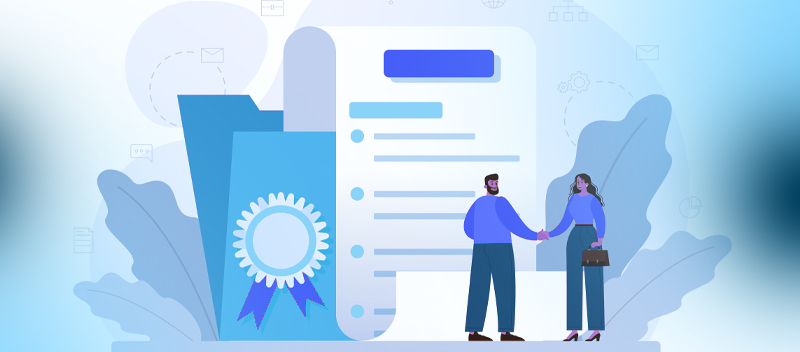
Outsourcing to third-party vendors is now standard practice for most organizations. At a cost, these suppliers maintain software, protect networks as well as cloud-based information, provide supplies, and offer technical expertise. However, for these vendors to effectively deliver their services, they need access to some or all of your systems and the data they hold. The use of this access can expose your organization to cybercrime, financial fraud, reputation loss, failure to meet requirements, and risks affecting operations. Crucially important for information security and data integrity is the need for the cyber protection team at your disposal to make sure there is strong control over suppliers. A critical phase within this framework is the issuance of a supplier risk management matrix used by every sub-contractor. Implementing a Vendor Risk Assessment Template The supplier risk assessment template, also called vendor risk questionnaire, is an all-purpose document that makes it easy for third-party entities to understand what you do, needs, and prerequisites from them. It is a resource you can use to ensure you give the right directions to your vendors. As you and your management team refine these protocols, consider using the following suggestions as a guide: Consult resources throughout your company to understand the full scope of your cyber security and compliance landscape; Consider industry-specific regulatory requirements; Compose a set of questions that touches on all relevant aspects of the various stakeholders. Also, ask some questions that might help you determine how crucial the functions of the supplier are for your business’s operations. Develop an information security scorecard template that rates vendors with a score of low, medium, or high-risk. Building on this resource, you can develop customized assessments that will help you evaluate individual vendors that conduct specialized tasks. [et_pb_column type=”1_3″ _builder_version=”4.21.2″ _module_preset=”default” background_color=”RGBA(255,255,255,0)” custom_padding=”|20px|30px|20px|false|true” custom_css_main_element=”position: -webkit-sticky;||position: sticky;||top: 160px;” border_radii=”on|12px|12px|12px|12px” global_colors_info=”{}” custom_css_main_element_last_edited=”on|desktop” custom_css_main_element_tablet=”position: -webkit-sticky;||position: sticky;||top: 100px;” custom_css_main_element_phone=”position: -webkit-sticky;||position: sticky;||top: 100px;”][et_pb_image src=”https://trustnetinc.com/wp-content/uploads/2024/05/banner-6.jpg” title_text=”banner-6″ url=”https://trustnetinc.com/soc-building-trust-and-confidence-in-third-party-relationships/” _builder_version=”4.25.0″ _module_preset=”default” border_radii=”on|12px|12px|12px|12px” global_colors_info=”{}”][/et_pb_image][et_pb_code _builder_version=”4.21.2″ _module_preset=”default” custom_css_main_element=”align-content:center;” global_colors_info=”{}”] [/et_pb_code][et_pb_text _builder_version=”4.21.2″ _module_preset=”default” text_font=”Hero New Regular||||||||” text_font_size=”16px” text_line_height=”1.9em” header_font=”Hero New Regular|600|||||||” header_text_color=”gcid-0576ae76-0687-4781-a665-a842d7e00b7b” header_font_size=”24px” header_line_height=”1.8em” custom_padding=”20px|20px|20px|20px|true|true” global_colors_info=”{%22gcid-0576ae76-0687-4781-a665-a842d7e00b7b%22:%91%22header_text_color%22%93}”] Related Posts [su_posts posts_per_page=”3″ offset=”1″ order=”desc” orderby=”modified” ignore_sticky_posts=”yes”] [/et_pb_row][et_pb_row column_structure=”3_5,2_5″ use_custom_gutter=”on” make_equal=”on” module_id=”tn-post-content” _builder_version=”4.27.2″ _module_preset=”default” background_color=”gcid-93bf029e-4344-4d23-ba27-cc2877de83d0″ width=”100%” max_width=”1191px” module_alignment=”center” custom_margin=”20px||20px|86px|true|false” custom_padding=”||||false|false” locked=”off” global_colors_info=”{%22gcid-93bf029e-4344-4d23-ba27-cc2877de83d0%22:%91%22background_color%22%93}”][et_pb_column type=”3_5″ _builder_version=”4.25.0″ _module_preset=”default” global_colors_info=”{}”][et_pb_text _builder_version=”4.27.2″ _module_preset=”default” text_font=”Hero New Regular||||||||” text_text_color=”#FFFFFF” text_line_height=”1.8em” header_text_color=”#FFFFFF” custom_padding=”25px|35px|25px|35px|true|true” global_colors_info=”{}”] For more information on our comprehensive compliance services, Schedule a Call today. [et_pb_column type=”2_5″ _builder_version=”4.25.0″ _module_preset=”default” global_colors_info=”{}”][et_pb_button button_url=”https://trustnetinc.com/about-us/contact-us/?_gl=1*fgq3fu*_gcl_au*MTc2MjkwMTM2NC4xNzIyODIzOTE4*_ga*MTk5MDk4NTAxMS4xNjk5MDE3NjEy*_ga_XTJGSNP3B8*MTcyODg3MDY3OC4yMjEuMC4xNzI4ODcwNjc4LjYwLjAuNDQyNTY5MTkx#contact-form” button_text=”Schedule a Call” _builder_version=”4.27.2″ _module_preset=”default” custom_button=”on” button_text_size=”20px” button_text_color=”#FFFFFF” button_bg_color=”gcid-c6a045ad-93f2-41aa-bea3-317846c80b16″ button_border_width=”0px” button_border_radius=”0px” button_font=”Hero New Regular||||||||” custom_margin=”30px||||false|false” custom_padding=”10px|45px|10px|45px|true|true” global_colors_info=”{%22gcid-c6a045ad-93f2-41aa-bea3-317846c80b16%22:%91%22button_bg_color%22%93}”][/et_pb_button][/et_pb_column][/et_pb_row][et_pb_row column_structure=”2_3,1_3″ module_id=”tn-post-content” _builder_version=”4.25.0″ _module_preset=”default” max_width=”1336px” module_alignment=”center” custom_margin=”-20px||||false|false” locked=”off” global_colors_info=”{}”][et_pb_column type=”2_3″ _builder_version=”4.25.0″ _module_preset=”default” global_colors_info=”{}”][et_pb_text quote_border_weight=”3px” quote_border_color=”gcid-c6a045ad-93f2-41aa-bea3-317846c80b16″ _builder_version=”4.27.2″ _module_preset=”default” text_font=”Hero New Regular|300|||||||” text_text_color=”gcid-f90447ab-4baa-4389-a89e-9e109c0034c2″ text_font_size=”16px” text_line_height=”1.9em” ul_line_height=”1.6em” quote_line_height=”2em” header_font=”Hero New Regular|700|||||||” header_2_line_height=”1.7em” header_4_line_height=”1.6em” custom_margin=”2em||||false|false” global_colors_info=”{%22gcid-f90447ab-4baa-4389-a89e-9e109c0034c2%22:%91%22text_text_color%22%93,%22gcid-c6a045ad-93f2-41aa-bea3-317846c80b16%22:%91%22quote_border_color%22%93}”] The Purpose of Corporate Compliance Programs Implementing a corporate compliance program is essential for any business aiming to thrive in today’s regulatory landscape. But what’s the real purpose behind these programs? Let’s dive into the primary objectives and see how they can safeguard your business. Key Objectives of Compliance Programs Risk Mitigation: At its core, a compliance program is about protecting your business from legal pitfalls. You can minimize the risk of penalties, lawsuits, and reputational damage. Building Trust: When your company consistently follows the law, it builds trust with customers, partners, and stakeholders. Ensuring Accountability: Clear compliance standards and procedures hold everyone in the organization accountable. This creates a culture of responsibility and ethical behavior. How Compliance Programs Protect Your Business A well-structured compliance program acts as a shield against various risks. Here are some key areas you need to consider: Securities Laws: For businesses engaged in securities, abiding by the Securities and Exchange Commission’s (SEC) mandates is a necessity. Adequate disclosure, acceptable accounting treatment, and proper presentation of financial statements are essential to prevent harsh penalties. Antitrust Laws: Your business must avoid anti-competitive practices. This includes thorough vetting of mergers and acquisitions and steering clear of activities like price-fixing that could restrict market competition. FTC Regulations: Companies interacting with consumers need to adhere to fair advertising and e-commerce practices while avoiding fraud. Ensuring compliance with FTC standards protects your brand from legal action. Environmental Laws and Regulations: Compliance here means managing pollution, waste, energy, and water use according to federal, state, and local laws. Heavy fines and reputational harm may result from noncompliance. FCPA: For businesses operating internationally, the Foreign Corrupt Practices Act is crucial. Policies must strictly prohibit bribery and ensure transparent financial accounting to prevent violations. Facilities Management: Your facilities must meet all relevant codes and regulations, including OSHA and DOT compliance. This covers everything from safety standards to zoning laws. By addressing these critical compliance areas, you’re protecting your business from risks that could otherwise lead to significant setbacks. Key Elements of a Corporate Compliance Program Let’s explore the essential components that form the backbone of effective compliance. — Risk Assessment Start by identifying and assessing potential compliance risks unique to your business. This implies a careful analysis of your processes to assess their potential vulnerability. The next step is coming up with a strong plan to manage risks. This approach protects the business from internal and external adverse effects. Identify potential risks: Evaluate areas like financial practices, operations, and regulatory changes. Develop a risk management plan: Create strategies to mitigate identified risks and regularly update them as needed. — Policy and Procedure Development Clear and comprehensive policies and procedures are the foundation of any compliance program. They provide the guidelines necessary for maintaining standards and ensuring that everyone in the organization is on the same page. Create comprehensive policies: These should cover all aspects of your business operations and adhere to relevant laws. Ensure regulatory compliance: Regularly review and update policies to align with industry standards and legal requirements. — Employee Training and Awareness Your employees are the front line of compliance, and keeping them informed is crucial. Regular training sessions ensure they understand compliance requirements and can apply them effectively. Provide regular training: Use workshops and online courses to keep everyone updated on compliance standards. Promote a culture of compliance:
SOC 2 and Beyond: Preparing for Advanced Security Audits
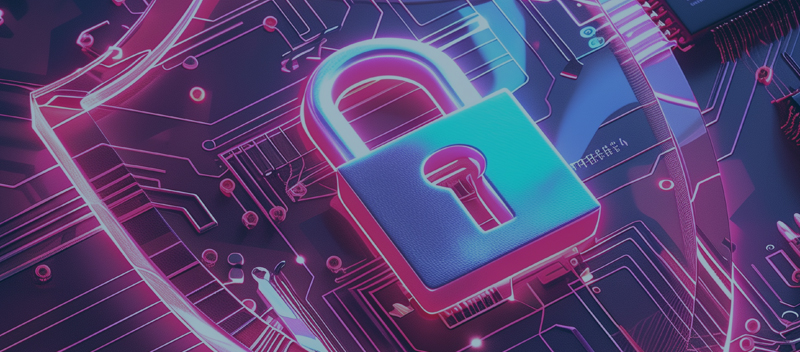
Ensuring robust data security is not just a necessity — it’s a strategic advantage. SOC 2, an essential framework for managing customer data, sets the benchmark for trust and transparency in securing information. But as threats grow more sophisticated, so do the audits that protect against them. For cybersecurity professionals and IT decision-makers like you, staying ahead of these complexities is crucial. Whether your organization has already achieved SOC 2 compliance or you’re aiming to fortify your security posture further, understanding the intricacies of advanced audits is key. Understanding Advanced Security Audits With the growth of the digital world, protecting data, especially sensitive information, is becoming a challenge. Traditional SOC 2 compliance checks have been at the forefront of data security for a long time, but the scenario is evidently changing. That’s why it’s important to grasp emerging audit standards and frameworks like the following: — HIPAA (Health Insurance Portability and Accountability Act) This framework primarily impacts healthcare organizations, including providers, insurers, and business associates. HIPAA sets the standard for protecting sensitive patient information by requiring security measures, regular risk assessments, and ensuring data is handled with confidentiality and integrity. In the healthcare sector, compliance is not just a legal obligation; it’s a commitment to your patient’s trust. — ISO 27001 This international standard provides a comprehensive approach to managing information security. It emphasizes systematic risk management processes involving people, processes, and IT systems by applying a risk management approach. Implementing ISO 27001 means a robust defense mechanism that aligns with global best practices, fortifying your organization’s security posture. — NIST CSF (National Institute of Standards and Technology Cybersecurity Framework) Designed to provide a flexible framework for managing and reducing cybersecurity risk, NIST CSF is essential for organizations wanting to align their cybersecurity strategies with their business objectives. It’s about more than compliance — it’s about integrating a culture of security awareness across your organization. — GDPR (General Data Protection Regulation) Applicable to any organization processing personal data of EU citizens, GDPR mandates stringent data protection measures and transparency in data handling. It gives individuals rights over their personal information, challenging organizations to consistently apply these rules across multiple jurisdictions. Compliance here is a testament to respecting user privacy and building trust. — PCI DSS (Payment Card Industry Data Security Standard) This standard is crucial for securing credit card transactions, essential for any organization handling cardholder data. It requires secure data storage, encryption, and regular monitoring and testing to prevent fraud and data theft. Adherence to PCI DSS ensures the safety of financial transactions and guards against potential breaches. These frameworks are not just checkboxes; they represent a dynamic shift in how organizations like yours need to approach security. It’s about anticipating risks before they materialize and adapting to a rapidly changing environment. For more on our comprehensive compliance services, Schedule a Call today Preparing for Advanced Audits Facing advanced security audits can feel daunting, but with the right preparation, you can navigate them with confidence. Whether you’re gearing up for an audit for the first time or refining your approach, it’s crucial to have a clear strategy. Let’s walk through some key steps that will set you on the path to success. First off, planning is your best friend. Take the time to plan thoroughly for the audit. This means understanding the scope, identifying the key areas of focus, and ensuring you’ve allocated the necessary resources. The more time you invest now, the smoother the audit process will be. Comprehensive documentation and evidence are non-negotiable. This documentation serves as the backbone of your audit, providing the evidence auditors require. Think of it as the narrative that tells the story of your compliance journey. Security isn’t a one-time effort; it’s an ongoing process. Regularly review and continuously monitor your systems and controls to ensure they are functioning as intended. This proactive approach not only helps you stay compliant but also strengthens your overall security posture. Here are some critical steps to help ensure a successful audit: Plan for the audit: Allocate ample time and resources to prepare. Understand what’s required and get your team aligned on the objectives. Stay updated with standards: Keep abreast of the latest accounting and security standards. This ensures you’re always in compliance with current regulations. Assess organizational changes: Regularly evaluate how changes within your organization might impact your audit readiness. No change is too small to consider. Learn from the past: Reflect on previous audits to understand what worked well and what didn’t. Use these insights to improve your current approach. Develop a timeline and assign responsibilities: Create a detailed timeline for the audit process and assign clear responsibilities. This keeps everyone accountable and ensures no critical steps are missed. Organize your data: An organized data system is vital. Ensure that all necessary data is easily accessible and well-structured for when auditors need it. By following these steps, you’re not just preparing for an audit, you’re building a resilient and adaptable security framework. Leveraging TrustNet’s Expertise With our extensive experience across various audit frameworks, we’re here to ensure your organization not only meets compliance standards but thrives in a secure environment. How TrustNet Can Assist You TrustNet takes an all-encompassing view of audit readiness that is adapted to suit your organization’s specific requirements. Mitigating the difficulties when preparing for even the most strenuous audits is our concern and commitment, and as such, we will expertly and precisely walk you through the entire process. We’ve worked extensively with frameworks such as NIST, HIPAA, SOC 2, ISO 27001, and PCI DSS. Our team ensures that your systems are aligned with these standards, providing a solid foundation for your security posture. Case Study – Calendly When Calendly, a global leader in CRM and meeting scheduling, sought to enhance its cybersecurity measures, they turned to TrustNet. Faced with the need to protect sensitive customer data, we implemented a NIST risk assessment, ensured HIPAA compliance, established SOC 2 criteria, and provided ISO 27001 systems. This multi-faceted approach fortified their
Navigating the Compliance Landscape: Key Regulations and Best Practices by TrustNet
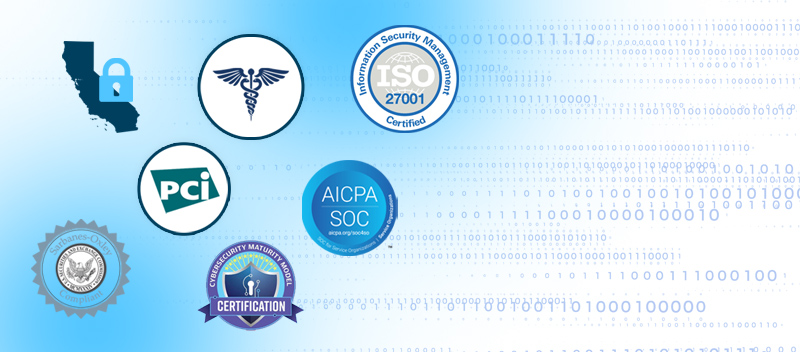
In today’s dynamic business environment, 91% of companies are planning to implement continuous compliance within the next five years. Compliance is the adherence to laws, rules, regulations, and procedures applicable to business activities. This not only protects organizations from various risks but also improves operational processes and confidence among various stakeholders. Navigating this complex landscape requires expertise, and TrustNet stands at the forefront as a leading authority in compliance solutions. With a deep understanding of key regulations like GDPR, CCPA, HIPAA, and PCI DSS, TrustNet empowers businesses to adopt best practices that ensure security and integrity in a global marketplace. Key Regulations and Standards It’s crucial to understand compliance and legal requirements to protect your business and build trust. Let’s evaluate these supporting principles in detail: General Data Protection Regulation (GDPR) Purpose: GDPR is designed to provide EU citizens with control over their personal data, obligating businesses globally to align their data processing activities with stringent privacy standards. This regulation emphasizes the significance of privacy by default and design, mandating organizations to incorporate data protection as a fundamental aspect of system development and operation. Key Requirements: Businesses must obtain explicit consent from individuals before processing their personal data, ensuring that consent is informed, freely given, and revocable at any time. Organizations are required to implement robust data protection measures from the onset of projects, incorporating privacy features throughout the lifecycle of processes and services. Benefits: Adhering to GDPR helps build trust with customers by demonstrating a commitment to protecting their personal information. This compliance can serve as a competitive advantage, distinguishing your business in markets increasingly concerned with privacy and data security. California Consumer Privacy Act (CCPA) Purpose: The CCPA gives Californians more control over their personal data and establishes a threshold that allows privacy practices to be extended even outside of the state. This regulation compels companies to improve their advertising practices by providing consumers with an understanding of the collection, use, and sharing practices of their information. Key Requirements: Companies must provide clear and accessible information to consumers about data collection practices, detailing the categories of personal information collected and the purposes for which it is used. Consumers have the right to request access to their data and request its deletion, obligating businesses to establish mechanisms to process these requests efficiently. Benefits: Compliance with CCPA strengthens brand reputation by demonstrating a commitment to consumer privacy and responsiveness to consumer rights. It also reduces the risk of legal action and fines associated with privacy violations, providing a safeguard against reputational harm. Health Insurance Portability and Accountability Act (HIPAA) Purpose: HIPAA is a critical regulation for the healthcare industry, aimed at protecting sensitive patient health information from unauthorized access and disclosure. It establishes a framework for ensuring the confidentiality, integrity, and availability of electronic protected health information (ePHI), thereby fostering trust between patients and healthcare providers. Key Requirements: Healthcare organizations must implement a comprehensive set of administrative, physical, and technical safeguards to protect ePHI. This includes conducting regular risk assessments to identify and mitigate potential threats to data security. Additionally, staff must be trained regularly on data privacy practices, ensuring that all employees understand and adhere to the organization’s security policies and procedures. Benefits: HIPAA compliance enhances patient trust by demonstrating a commitment to protecting their sensitive health information. It also shields healthcare organizations from substantial fines and reputational damage resulting from data breaches, providing a legal and financial safeguard. Payment Card Industry Data Security Standard (PCI DSS) Purpose: PCI DSS is essential for businesses handling credit card transactions, ensuring the security and confidentiality of cardholder data. This standard is designed to prevent data breaches and fraud by establishing a comprehensive framework for securing payment card data. Key Requirements: Organizations must maintain a secure network infrastructure, implementing firewalls and encryption protocols to protect cardholder data during transmission and storage. Access to sensitive information must be restricted to authorized personnel, with robust authentication measures in place to prevent unauthorized access. Benefits: PCI DSS compliance significantly reduces the risk of data breaches, safeguarding businesses from financial losses and reputational damage. It also enhances customer confidence in payment processes, providing assurance that their sensitive information is protected. System and Organizations Controls (SOC) Purpose: SOC reports are crucial for service providers, offering transparency into their data protection and management practices. These reports provide assurance to clients about the security, availability, processing integrity, confidentiality, and privacy of the systems used to process client data. Key Requirements: Service providers must establish a comprehensive control framework that addresses all aspects of data processing and security. This includes implementing internal controls to safeguard data and undergoing regular independent audits to validate the effectiveness of these controls. Benefits: SOC compliance enhances client trust by demonstrating a commitment to data protection and transparency. It can serve as a differentiator in a competitive market, positioning service providers as reliable partners for businesses seeking to outsource critical functions. Sarbanes-Oxley Act (SOX) Purpose: SOX is designed to protect investors by ensuring the accuracy and reliability of financial reporting in publicly traded companies. This regulation enhances corporate governance and accountability, preventing fraudulent financial practices and restoring investor confidence in the financial markets. Key Requirements: Public companies must establish robust internal controls over financial reporting, ensuring the accuracy and completeness of financial statements. The CEO and CFO are required to certify the accuracy of these statements, making them personally accountable for any discrepancies. Benefits: SOX compliance builds investor confidence by demonstrating a commitment to financial transparency and accountability. It also protects companies from legal and financial repercussions associated with fraudulent financial reporting, providing a safeguard against reputational harm. Cybersecurity Maturity Model Certification (CMMC) Purpose: The CMMC establishes cybersecurity standards for defense contractors, ensuring the protection of sensitive national security information. This certification is a requirement for companies working with the Department of Defense (DoD), providing assurance that they have implemented the necessary cybersecurity practices to protect controlled unclassified information. Key Requirements: Companies must implement cybersecurity practices based on the CMMC maturity level appropriate for
Future-Proofing Your Business Against Cyber Threats
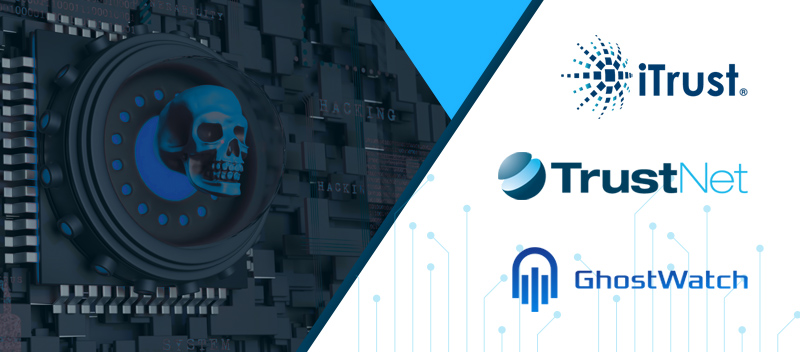
Imagine this: 61% of organizations are worried that AI-powered attacks could jeopardize sensitive information. It’s a daunting thought in today’s rapidly evolving threat landscape. As cybersecurity professionals, IT decision-makers, and leaders in organizations like yours, you know the stakes are high. The pace of technological change can be dizzying, with 33% of you struggling to keep up with emerging threats. Blind spots from point tools continue to hinder 91% of respondents, affecting threat prevention. And let’s not forget the complexity and fragmentation in cloud environments, cited by 54% as a critical data security concern. At TrustNet, we understand your struggles and are here to help. By leveraging our expertise, you can future-proof your business against these cyber threats, ensuring robust protection for your most valuable assets. Emerging Cyber Threats First, let’s delve deeper into the significant cyber threats and trends you should know about: — Increasing Sophistication Cyberattacks are growing more complex and cunning: Advanced Techniques: Attackers are employing sophisticated methods like polymorphic malware, which can change its code to evade detection. Strategic Innovations: New tactics are exploited, such as zero-day vulnerabilities, where hackers attack software flaws before they are patched. State-Sponsored Amplification: Nation-state actors bring resources and organization, making their attacks particularly formidable. — Diverse Attack Vectors Cyber threats are now multifaceted: Malware, Ransomware, and DDoS: These attacks can be layered, creating a multi-pronged threat. Phishing and Social Engineering: Starting points for many breaches, these tactics exploit human psychology to gain access. — Target Variety The net of cyber threats is widening: Beyond Big Targets: While large corporations remain at risk, hackers are increasingly targeting smaller businesses due to perceived weaker defenses. Healthcare and Education: These sectors are appealing targets due to the sensitive data they handle and often inadequate security measures. Personal Information: With the rise of big data, personal information is a lucrative target for theft and resale. — Supply Chain Attacks Supply chain attacks have become a prominent concern: Infiltration Tactics: Attackers target third-party vendors or suppliers, exploiting their access to infiltrate primary targets. This method often bypasses traditional security defenses, as these vendors are usually trusted partners. Impact on Industries: Once inside, attackers can modify software updates or implant malicious code, affecting a wide range of industries. The consequences can be severe, leading to data breaches, financial losses, and operational disruptions. — IoT Vulnerabilities The rise of Internet of Things (IoT) devices has introduced new vulnerabilities into the digital ecosystem: Security Gaps: Many IoT devices often lack encryption, have default passwords, and are rarely updated, creating easy entry points for cybercriminals. Exploitation Potential: Once compromised, IoT devices can be harnessed for a variety of malicious purposes. They can serve as gateways to larger networks, allowing attackers to infiltrate and gather sensitive information. — AI and Machine Learning in Attacks The future of cyber threats is AI-driven: Automated Processes: AI can conduct attacks at a scale and speed previously unattainable. Enhanced Phishing: Machine learning enables the creation of highly personalized and convincing phishing attacks. Proactive Threats: AI can identify and exploit vulnerabilities before they are widely recognized. By comprehending these evolving threats, you can implement strategic defenses to safeguard your organization. Learn more about our Managed Detection and Response services Here Building a Resilient Security Posture Building resilience is not limited to defensive actions; it is a mindset and approach that develops in response to the changing threat landscape. Below, we will discuss some fundamental strategies for strengthening your organization’s security. Implementing Robust Cybersecurity Frameworks Laying a strong foundation with a robust cybersecurity framework is crucial. By adopting standards such as ISO 27001 or the NIST Cybersecurity Framework, you provide your organization with a structured approach to managing risks effectively. These frameworks not only ensure compliance but also foster a secure environment by: Offering comprehensive guidelines to safeguard data. Helping to establish consistent security policies. Ensuring your defenses are aligned with the latest best practices. Conducting Regular Risk Assessments Understanding where your vulnerabilities lie is half the battle. Regular risk assessments allow you to: Identify potential weaknesses before they can be exploited. Prioritize risks, directing resources where they’re most needed. Develop targeted strategies to mitigate identified threats. Prioritizing Employee Training Your employees are not just staff—they’re your first line of defense against cyber threats. It’s vital to: Conduct regular training sessions to boost awareness. Embed cybersecurity into your corporate culture with interactive workshops. Prepare your team to recognize and counteract phishing and other common tactics. Developing an Incident Response Plan Despite the best preventive measures, breaches can still occur. A well-defined incident response plan is essential and should: Outline clear, actionable steps for identifying, containing, and eradicating threats. Ensure that your team can respond swiftly to minimize damage. Be regularly tested and updated to remain effective against new threats. Embracing Continuous Improvement and Adaptation The nature of cyber threats is ever-changing, and so must your strategies. Commit to a cycle of continuous improvement by: Regularly reviewing and updating your security measures. Staying informed about emerging technologies and threat trends. Being ready to adapt your strategies to turn potential threats into opportunities for growth. Embracing these principles ensures a secure and resilient future for your organization against the backdrop of an ever-evolving threat landscape. TrustNet’s Approach to Future-Proofing At TrustNet, our methodology hinges on a blend of innovation and reliability. We’re committed to delivering top-notch cybersecurity solutions, a commitment that’s earned the trust of businesses worldwide. GhostWatch: Your Shield in the Digital World GhostWatch is at the forefront of our managed compliance and security services. It’s designed to instill confidence by delivering world-class protection backed by industry-leading technology and a team of highly skilled experts available 24/7. Here’s what GhostWatch offers: Affordable Security: Every business, regardless of size, deserves access to strong security and compliance solutions. Reliability: Our services are dependable, providing consistent protection that you can count on. Transparency: We maintain clear pricing structures with flexible terms, ensuring you understand exactly what you’re investing in. Effectiveness: Always a step ahead, our technologies and services offer robust

